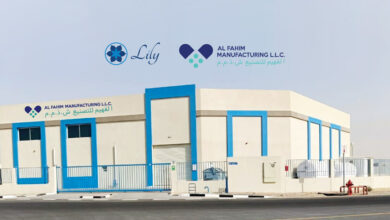
The COVID-19 pandemic has shone a light on the heroism, fortitude and cruciality of frontline healthcare workers. It has also highlighted the importance of having the right technology and resources in place to reduce the strain on those frontline workers and support them in their day-to-day work, with or without a pandemic unfolding.
As hospitals and healthcare workers are placed under increased strain, technology has risen to the forefront in the fightback against the pandemic in a number of innovative and exciting ways.
A collective leap forward in technological innovation
One remarkable initiative is from the Pan-European Privacy-Preserving Proximity Tracing (PEPP-PT) organisation. The initiative brings together scientists and researchers from eight countries to develop smartphone technology that will be able to track people who have come into contact with others who have contracted COVID-19.
Similarly, countries including Austria, Germany, Norway, and the UK are developing their own public contact tracing mobile apps to help track and control the spread of the virus. Chatbots are also being put to use with one German start-up launching a ‘Corona-Bot’ that asks users a series of automated questions to conclude whether they have contracted COVID-19 if they begin to display the symptoms.
Germany has also seen a significant rise in doctors using telemedicine services that allow patient consultations to take place remotely online, enabling them to perform their duties while adhering to social distancing measures. When it comes to hospital capacity, centralised dashboards are helping to ensure efficient bed utilisation across different hospital settings.
Countries outside Europe has launched technology innovations to help fight COVID-19, UAE who developed a smartphone application, that aims to slow the spread of coronavirus by Bluetooth & contact tracing technology to notify you when exposed to an individual who tested positive or are displaying symptoms of Covid-19.
With researchers and scientists around the world performing their own tests and studies to understand the virus and develop a vaccine, the European Commission has also announced the launch of a data portal providing access to tools and data sets. This will prove to be a welcome resource for those working tirelessly towards combating the impact of the virus.
Each of these innovations reduces strain on the healthcare sector in one way or another, but the effectiveness of technology inside hospitals and healthcare facilities also needs to be considered. This is where healthcare specific printer technology comes into play.
The role of printer technology in the healthcare revolution
While the pandemic is encouraging all kinds of innovation and development, there is plenty of existing technology making a difference within healthcare organisations.
For example, accessing patient records quickly and securely is critical to patient care. Having a printer that provides 24/7 support is therefore an essential requirement that can be met by smart MFPs that can be easily maintained by the user, like OKI’s MC800 Series, ensuring the availability and confidentiality of information at all times.
A new requirement all organisations are having to face as a result of the COVID-19 pandemic, is the implementation of social distancing guidelines. Floor stickers are the ideal solution for encouraging social distancing highlighting where patients need to stand or wait to maintain the recommended distance from each other. The ability to print floor stickers as and when needed can help healthcare organisations protect the wellbeing of staff and patients.
To support businesses and organisations with their floor sticker requirements through the pandemic, OKI Europe is offering free* floor sticker media and downloadable artwork communicating social distancing guidelines. This will enable healthcare organisations to minimise the time it takes to print essential floor stickers and put them in place, whether in hospitals, surgeries or pharmacies, communal spaces, wherever they may be required.
Printers specifically for the healthcare sector, for example, are driving efficiency and reducing administrative strain. Healthcare organisations need to think beyond the worst of the pandemic and consider how they will cope with the pressure when people who have non-COVID-19 illness and ailments can get the treatment that they have been waiting for.
When it comes to making healthcare workers’ lives easier printers that are designed specifically for the sector can make all the difference. For example, OKI’s DICOM embedded printers enable healthcare staff to print directly from medical imaging equipment without conversion software or external hardware. These devices for non-diagnostic imaging as well as general office printing.
Compact printers that provide DICOM and general printing capabilities have a smaller footprint meaning devices can be moved to the front of house, freeing up administrative time and delivering productivity gains. What’s more, OKI’s healthcare printers use secure printing software, meaning sensitive documents can be accessed on the device, printed securely and then deleted automatically.
Looking ahead through a positive lens
When the worst of the pandemic has passed and life begins to return to a form of normality, national healthcare providers will likely begin to address areas where technology can help support and improve staff efficiency and operations. While the pandemic has brought significant challenges and disruption to peoples’ lives, we should all find solace in the fact that the crisis has also accelerated and shone the light on those innovative technologies that are helping to drive improvements.
Like many other industries, the healthcare sector will likely go through significant change as we come out of this crisis, but change is not always a bad thing. With the right technology in place, healthcare organisations can improve efficiencies and provide the best possible service when pressure is at an ultimate high.














